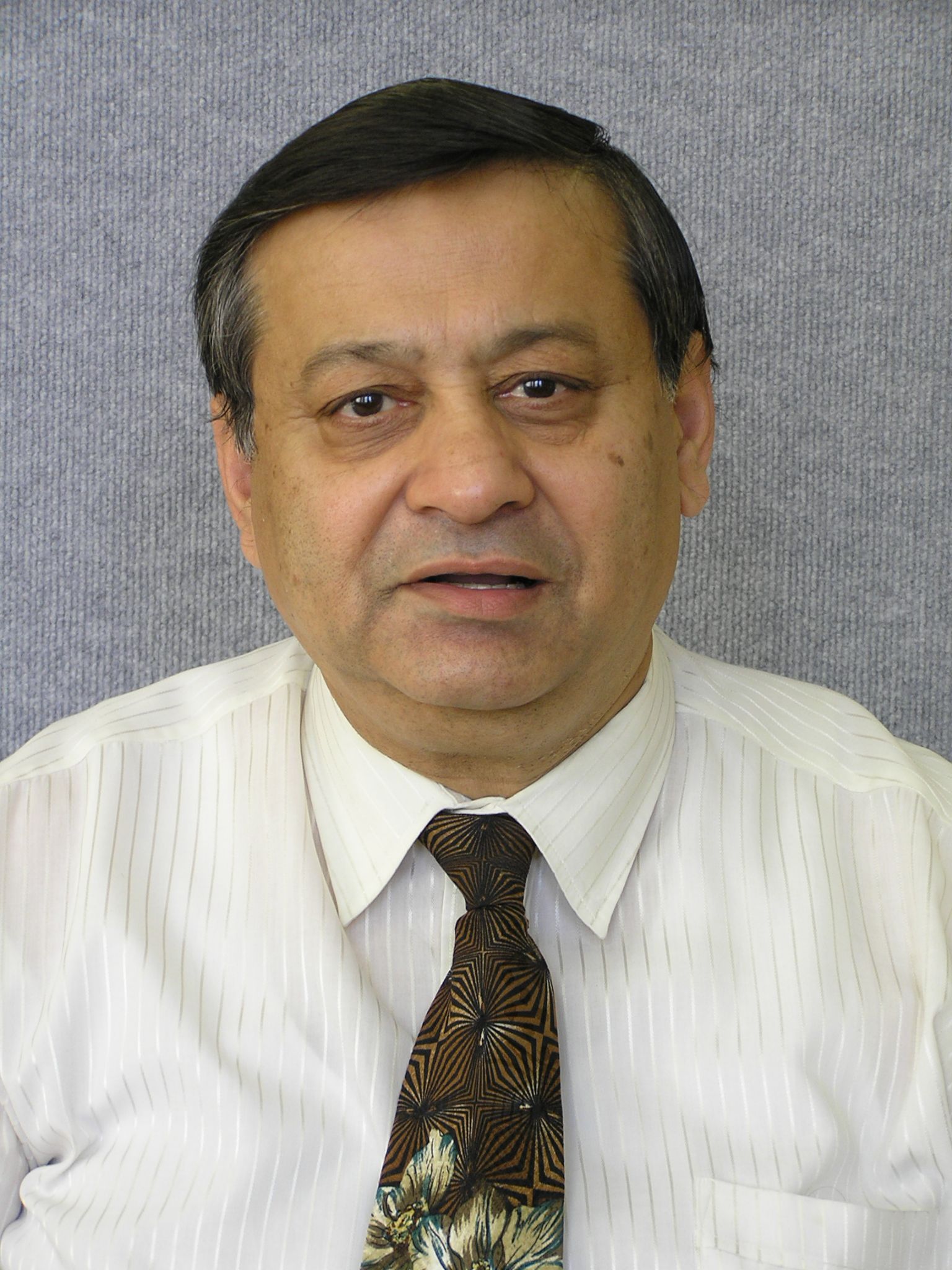|
|
Organized by:

UTM SKUDAI |
Co-organized by:

IEEE Malaysia Section
  
IES/PELS/IAS Joint Chapter

PES Malaysia Chapter
|
Technical Co-sponsor:

Korean Institute of Power Electronics |
|
|
TUTORIALS
*Please print out the tutorial notes before
attending the session. These notes will not be provided at the conference venue.
- PROF. DUSHAN BOROYEVICH
- "MODELING AND CONTROL OF THREE-PHASE PWM CONVERTERS"
|
 Biodata: Biodata:
Prof. Dushan Boroyevich was born in 1952 in Zagreb, in what then used to be Yugoslavia. In the same country, he earned a Dipl. Ing. degree from the University of Belgrade in 1976 and an M.S. degree from the University of Novi Sad in 1982, both in electrical engineering. He obtained a Ph.D. degree in power electronics in 1986 from Virginia Polytechnic Institute and State University, Blacksburg, Virginia, USA, also known as Virginia Tech.
Dr. Boroyevich is now American Electric Power Professor at Virginia Tech and CPES co-director. He has led numerous research projects in the areas of multi-phase power conversion, electronic power distribution systems, modeling and control, and multi-disciplinary design optimization. He developed a comprehensive geometric approach to modeling and control of high-frequency switching power converters, which is widely used for the analysis, design, and control of multi-phase ac power conversion systems. He advised over 20 Ph.D. and almost 30 M.S. students to graduation and co-authored with them over 400 technical publications.
Dr. Boroyevich is a Fellow of IEEE and recipient of IEEE William E. Newell Power Electronics Technical Field Award. He received the Award for Outstanding Achievements and Service to Profession by the European Power Electronics and Motion Control Council, four prize paper awards, and several awards for excellence in research and teaching at Virginia Tech.
Tutorial summary:
Three-phase pulse-width-modulated (PWM) converters evolved in conjunction with ac motor drives, and
their modeling and control has for a long time been considered an integral part of the motor drive control.
However, these converters are now being widely used in many other applications, from uninterruptible
power supplies (UPS), active front-end rectifiers (power factor correction), active filters, static VAr
compensators (STATCOM), unified power flow controllers (UPFC), and other “ac power quality”
applications, to wind and solar energy applications. In many of these applications the converters have to
be controlled in the presence of unknown or widely varying and often nonlinear dynamic loads and/or
sources. For high-power applications, there is also greatly increased interest in multi-level converters and
converter paralleling.
The talk will present an overview of the unified geometric approach to modeling, modulation, and control
of the three-phase high-frequency converters. Operation principles and modulation strategies of the most
common topologies in typical applications will be reviewed. Converter switching, average, and
multivariable small-signal models will be developed in a consistent framework, and their use for the
closed-loop control design will be illustrated. Several recent advancements in the modulation and control
of multi-level, four-phase, and parallel converters will be presented. Tutorial notes:
Please
click here to download the TUTORIAL NOTES. |
- PROF. AKHTAR KALAM - "POWER SYSTEM PRINCIPLES APPLIED IN PROTECTION PRACTICE"
|
 Biodata: Biodata:
Professor Akhtar Kalam has been at Victoria University of Technology, Melbourne since 1985 and a former Deputy Dean of the Faculty of Health, Engineering and Science for 7 years.
He has wide experience in educational institutions and industry across four continents. He received his B.Sc. and B.Sc. Engineering from Calcutta University and Aligarh Muslim University, India in 1969 and 1973 respectively. He completed his MS and Ph.D. at the University of Oklahoma, USA and the University of Bath, UK in 1975 and 1981 respectively. He has worked with Ingersoll Rand and other electrical manufacturers. He has held teaching appointments at the University of Technology, Baghdad, Iraq and Capricornia Institute of Advanced Education, Rockhampton, Queensland.
He is regularly invited to deliver lectures, work on industrial projects and examine external thesis overseas. His major areas of interests are power system analysis, communication, control, protection and cogeneration systems. He has been actively engaged in the teaching of Energy Systems to undergraduates, postgraduates and providing professional courses to the industry both in Australia and overseas. He regularly offers professional development courses on Power System Protection, Renewable Energy and Cogeneration & Gas Turbine Operation to the Energy Supply Association of Australia (ESAA) and Australian Power Institute (API). He also runs postgraduate distance education programme on Power System Protection for the ESAA. He has conducted research, provided industrial consultancy and published over three hundred and twenty publications on his area of expertise and written over 27 books in the area. Professor Kalam is a Fellow of EA, IET and a member of IEEE.
Tutorial summary:
Electricity supply business worldwide continues to move through a period of rapid change with more focus now seen on interconnected networks and independent power generators. To ensure viable system performance and safety, designers and operators need to have a working knowledge of power system protection. The Power System Principles applied in Protection Practice tutorial is designed to provide a practical understanding of the principles and practices of electrical protection applied to distribution systems, transmission systems and power production. The workshop provides participants to gain the basic skills necessary to work in the area of protection design and maintenance. Similarly it provides the opportunity for those already working in the area to broaden their knowledge of the application of protection techniques to a wide spectrum of power system plant.
The workshop aims to cover the principles of fault calculations, the characteristics of commonly used protection schemes, the performance of current and voltage transformers and the integration of these elements into the overall protection systems applied to practical power systems. Participants will have the opportunity to develop their knowledge and skills through discussion of practical applications and problems.
Participants will have the opportunity to gain the following skills:
-
Understanding of the need and methods employed to remove electrical faults on the power system.
-
Understanding of the schemes used to provide electrical protection of modern power networks.
-
Awareness of new techniques and methods used in design.
-
Understanding of the operation and limitations of current and voltage transformers.
-
Demonstrated skills in protection analysis.
Tutorial notes:
Please
click here to download the TUTORIAL NOTES. |
- ASSOC. PROF. TAUFIK - "PRACTICAL DESIGN OF
BUCK CONVERTER"
|
 Biodata: Biodata:
Dr. Taufik was born and raised in Jakarta, Indonesia. He came to the US to study and received his BS degree from Northern Arizona University in 1993 (Cum Laude), MS degree from University of Illinois Chicago in 1995, and Doctor of Engineering degree from Cleveland State University in 1999; all in Electrical Engineering. In Fall 1999, Dr. Taufik joined the Electrical Engineering department at California Polytechnic State University in San Luis Obispo (known as Cal Poly) where he is currently an Associate Professor. Since then he has been the Coordinator of the Power Electronics Lab where he has conducted research projects and developed new laboratory experiments in power electronics.
Between 1997 and 1999, Dr. Taufik has been employed by several companies including Capstone Microturbine, Rockwell Automation (Allen-Bradley), and Picker International. Additionally since joining Cal Poly, he has spent summer and consulting work with several companies such as Rantec, San Diego Gas & Electric, APD Semiconductor, and Diodes, Inc.
Dr. Taufik is a Senior Member of IEEE and held a leadership position as the Chair of IEEE Central Coast Section for two years. At Cal Poly, Dr. Taufik is a recipient of numerous awards for excellence in teaching and advising. His areas of interest include power electronics, power systems, and engineering education. He has advised over 100 undergraduate student projects and over 20 M.S. students to graduation and co-authored with them over 40 technical publications. He has also published one book along with several technical reports.
Tutorial summary:
This tutorial reviews the basic and practical aspects in the design of a Buck converter circuit. This tutorial begins by looking at the steady state operation and analysis of the basic Buck converter and its governing design equations. Examples of utilizing design equations for selecting the main components of the Buck converter will be presented whose results will be compared with those obtained from computer simulations. The tutorial will then focus on common practical design considerations such as those associated with real-world components. Additionally, common problems encountered in practical buck converter will be discussed along with approaches to mitigate the problems. The tutorial will then briefly cover challenges in future applications utilizing the Buck converter. In particular, challenges in applications which require high efficiency converter and low voltage output at high load current will be described. Methods found recently to help address these challenges will also be presented.
This tutorial is aimed to be both a refresher and intermediate level course in Buck converter design. The course will therefore be beneficial for practicing engineers, faculty and students who are interested in revamping their skills in buck design, as well as for those who want to learn the basic design of buck converter.
Tutorial notes:
Please
click here to download the TUTORIAL NOTES. |
|
|